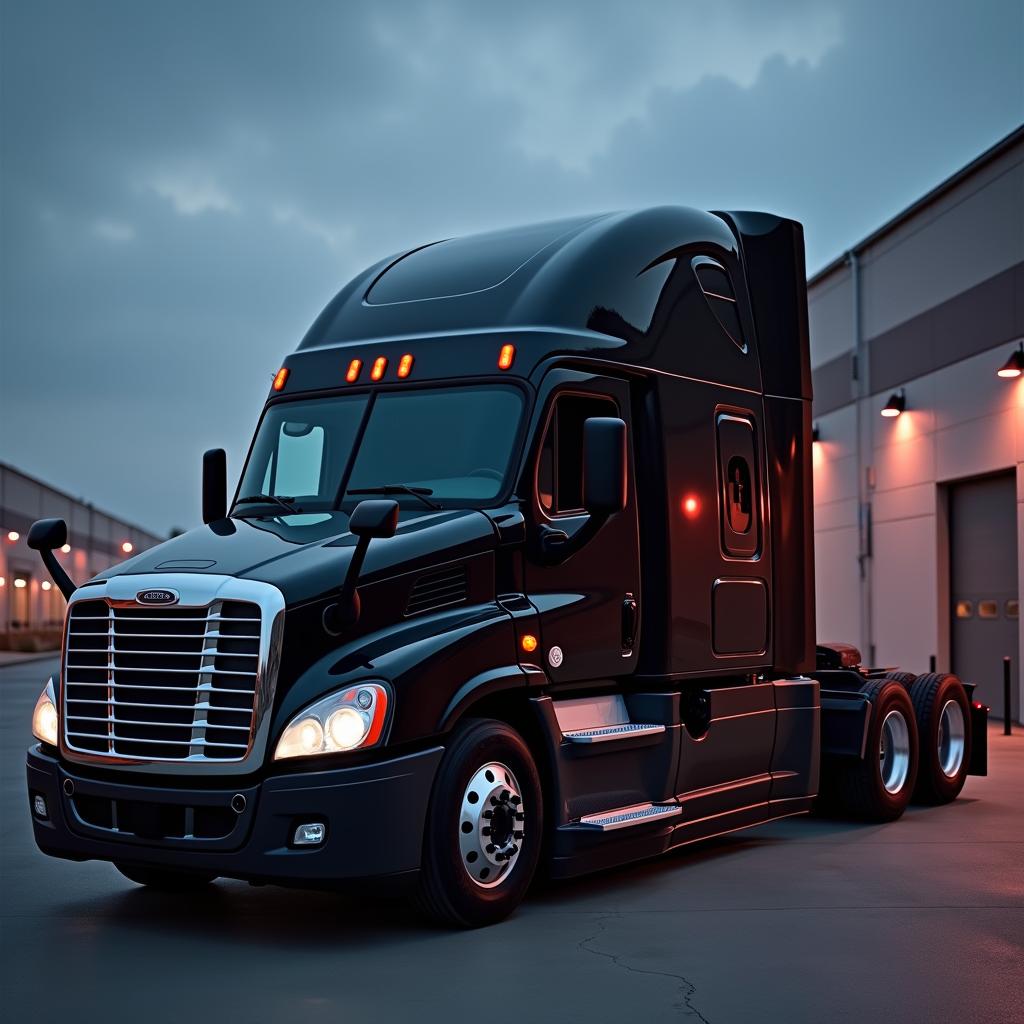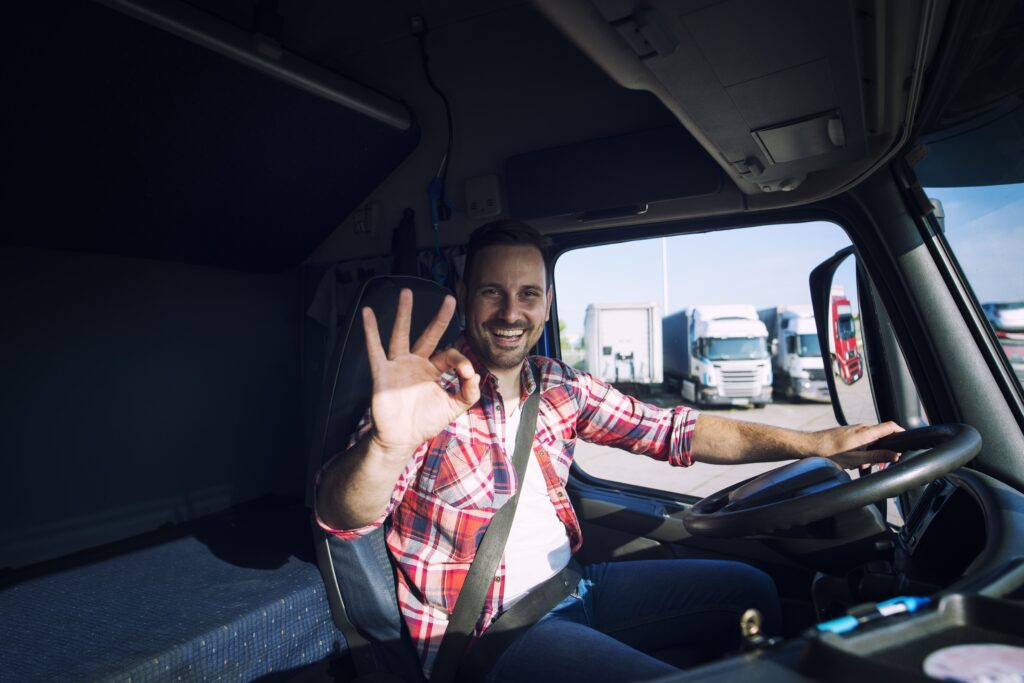In the ever-evolving world of e-commerce, few companies have disrupted logistics quite like Amazon. The retail giant’s impressive delivery network has revolutionized consumer expectations, making two-day, one-day, and even same-day delivery the new standard. At the heart of this logistics revolution is Amazon trucking – the vast fleet of vehicles that forms the backbone of the company’s distribution network. As online shopping continues to surge, Amazon’s transportation ecosystem has become a fascinating case study in modern supply chain management and last-mile delivery innovation.
The Evolution of Amazon’s Trucking Network
Amazon’s journey from online bookstore to e-commerce behemoth has been mirrored by the evolution of its logistics capabilities. What began as a company reliant on third-party carriers has transformed into one of the world’s most sophisticated e-commerce delivery networks.
In the early days, Amazon completely outsourced its shipping needs to established carriers like UPS, FedEx, and the US Postal Service. However, as order volumes increased exponentially, the company recognized that building its own transportation network would be crucial for maintaining control over delivery times and costs.
The transition began around 2014 when Amazon started investing heavily in its logistics infrastructure. Today, Amazon trucking encompasses:
- A fleet of over 70,000 semi-trucks and trailers
- Thousands of delivery vans operating under the Amazon Delivery Service Partner program
- A growing number of electric delivery vehicles
- A network of fulfillment centers, sortation centers, and delivery stations
According to a Supply Chain Dive analysis, Amazon now delivers more than 66% of its own packages in the United States, a significant increase from just a few years ago when it relied primarily on third-party carriers.
Inside Amazon’s Trucking Operations: From Fulfillment Centers to Your Doorstep
The journey of an Amazon package involves a complex choreography of Amazon trucking operations that work seamlessly together. Understanding this process reveals the sophistication behind the company’s ability to deliver millions of packages daily.
First Mile: Supplier to Fulfillment Center
The logistics journey begins with Amazon’s relationships with suppliers. Products are transported from manufacturers and distributors to Amazon’s vast network of fulfillment centers. This often involves:
- Long-haul trucking using Amazon’s own fleet or contracted carriers
- International shipping for products from global suppliers
- Regional trucking networks that connect Amazon’s growing number of facilities
At this stage, Amazon trucking focuses on efficiency and volume, with standard 53-foot trailers hauling merchandise in bulk quantities.
Middle Mile: The Inter-Facility Network
Once products arrive at fulfillment centers, they enter Amazon’s middle-mile network – perhaps the most complex aspect of their logistics operation. This involves:
- Moving inventory between fulfillment centers to optimize product availability
- Transporting sorted packages from fulfillment centers to sortation centers
- Transferring packages from sortation centers to delivery stations
These middle-mile routes are typically covered by Amazon-branded semi-trucks operated either by Amazon Transportation Services (the company’s in-house trucking division) or contracted carriers within the Amazon freight partner network.
Last Mile: Delivery Station to Customer
The final and most visible component of Amazon trucking is the last-mile delivery operation. This is where packages make their final journey from local delivery stations to customer doorsteps, typically via:
- Amazon-branded delivery vans operated by Delivery Service Partners (DSPs)
- Amazon Flex drivers using personal vehicles
- Emerging technologies like electric delivery vehicles and autonomous delivery robots
This three-tiered approach allows Amazon to maintain unprecedented control over its supply chain, creating a seamless experience for customers while continuously optimizing for cost and speed.
Amazon’s Fleet Innovation: Revolutionizing Trucking Technology
Beyond simply building a vast fleet, Amazon has positioned itself at the forefront of transportation technology. The company’s commitment to innovation in Amazon trucking is evident across multiple initiatives:
Electric Vehicle Deployment
In 2019, Amazon made headlines by ordering 100,000 electric delivery vans from Rivian, representing the largest-ever order of electric delivery vehicles. This bold step toward sustainable e-commerce transportation aligns with Amazon’s Climate Pledge to achieve net-zero carbon emissions by 2040.
The custom-designed electric vans began rolling out in 2022, featuring:
- 150-mile range optimized for delivery routes
- Advanced safety features including 360-degree cameras
- Integration with Amazon delivery software
- Zero tailpipe emissions
According to Amazon’s sustainability reports, the company is on track to have thousands of electric delivery vehicles on the road in hundreds of cities by the end of 2023, significantly reducing the carbon footprint of its delivery operations.
Autonomous Driving Technology
While fully autonomous trucks aren’t yet a mainstream reality, Amazon is actively investing in this technology. The company has partnered with autonomous trucking startups and is reportedly testing self-driving trucks on select routes.
For middle-mile operations especially, autonomous technology offers significant advantages:
- Potential 24/7 operation without hours-of-service limitations
- Improved fuel efficiency through optimized driving patterns
- Enhanced safety through elimination of human error
- Long-term cost savings despite high initial investment
These investments in cutting-edge technology demonstrate Amazon’s long-term vision for Amazon trucking: a highly efficient, increasingly automated, and environmentally sustainable transportation network.
Amazon’s Logistics Ecosystem: Beyond Traditional Trucking
What makes Amazon trucking truly remarkable is how it integrates with the company’s broader logistics ecosystem. Rather than operating as a standalone function, Amazon’s transportation network is deeply interconnected with other innovative solutions:
Amazon Air
To reduce dependence on traditional air cargo carriers and speed up long-distance shipments, Amazon has built its own air cargo operation. Amazon Air now operates a fleet of over 75 aircraft, complementing the Amazon trucking network by:
- Enabling faster coast-to-coast transportation
- Supporting international shipping operations
- Providing flexibility during peak seasons
- Reducing transit times for Prime deliveries
Aircraft typically transport goods between Amazon Air Hubs, where they connect with the ground transportation network of trucks and vans.
Fulfillment By Amazon (FBA)
Amazon’s third-party marketplace now accounts for more than half of all units sold on Amazon.com. Through the FBA program, third-party sellers can leverage Amazon’s entire logistics network, including its extensive trucking infrastructure.
This creates a virtuous cycle where:
- More sellers join the platform, attracted by Amazon’s logistics capabilities
- Increased volume improves efficiency and reduces per-unit shipping costs
- Lower costs and faster delivery attract more customers
- Customer growth attracts more sellers
The integration of third-party inventory into Amazon’s transportation system has been a key factor in the company’s dominance of e-commerce.
Amazon Freight
In 2018, Amazon launched Amazon Freight, a digital freight brokerage service that matches shippers with carriers. This platform essentially allows Amazon to monetize excess capacity in its transportation network while giving other businesses access to competitive rates.
Through Amazon Freight, the company has positioned itself not just as a user of transportation services but as a provider – further expanding its influence in the logistics industry.
Challenges and Future Directions for Amazon Trucking
Despite its remarkable success, Amazon trucking faces significant challenges that will shape its future development:
Driver Shortage and Workforce Issues
Like the broader trucking industry, Amazon must contend with an ongoing driver shortage. The company has addressed this through competitive wages and benefits, but recruiting and retaining enough qualified drivers remains a challenge, particularly for long-haul routes.
Amazon’s Delivery Service Partner program, which helps entrepreneurs start local delivery businesses, has been one innovative solution to this problem, creating thousands of jobs while expanding last-mile capacity.
Environmental Impact
The environmental footprint of such a massive transportation operation is considerable. Amazon’s commitment to net-zero carbon emissions by 2040 will require continued aggressive investment in:
- Electric and alternative fuel vehicles
- Renewable energy for charging infrastructure
- Route optimization to reduce miles traveled
- Packaging reduction to maximize load efficiency
The company’s order of 100,000 electric delivery vans represents just the beginning of this transition toward sustainable logistics operations.
Regulatory Environment
As Amazon’s logistics operation continues to grow, it faces increasing regulatory scrutiny regarding:
- Labor practices and driver working conditions
- Safety compliance and accident rates
- Environmental regulations around emissions
- Antitrust concerns related to market dominance
Navigating this complex regulatory landscape while maintaining operational efficiency will be crucial for the continued expansion of Amazon trucking.
Future Innovations
Looking ahead, we can expect Amazon to continue pushing the boundaries of what’s possible in transportation logistics:
- Drone delivery for lightweight, time-sensitive packages
- Expanded use of autonomous vehicles beyond testing phases
- Further vertical integration, potentially including truck manufacturing
- Greater use of artificial intelligence for predictive logistics
Each of these innovations has the potential to further revolutionize how products move from suppliers to customers.
Conclusion: The Road Ahead for Amazon Trucking
As we’ve explored throughout this article, Amazon trucking represents far more than just a fleet of vehicles – it’s a sophisticated, technology-driven ecosystem that has fundamentally changed consumer expectations around delivery speed and reliability.
From its humble beginnings relying on third-party carriers to today’s vast network of semi-trucks, delivery vans, airplanes, and emerging technologies, Amazon has demonstrated an unrelenting focus on controlling its distribution destiny. The company’s willingness to invest billions in transportation infrastructure has created a competitive advantage that competitors struggle to match.
For businesses operating in the e-commerce space, understanding Amazon’s approach to logistics offers valuable insights. The emphasis on end-to-end control, technology integration, and continuous innovation provides a blueprint for success in the digital retail landscape.
Is your company looking to optimize its logistics operations or develop a more Amazon-like approach to fulfillment and delivery? Our team of supply chain experts specializes in helping businesses of all sizes implement cutting-edge transportation solutions.
Take the next step in transforming your logistics operations. Submit our consultation form today to discover how we can help you navigate the future of e-commerce transportation and delivery.







